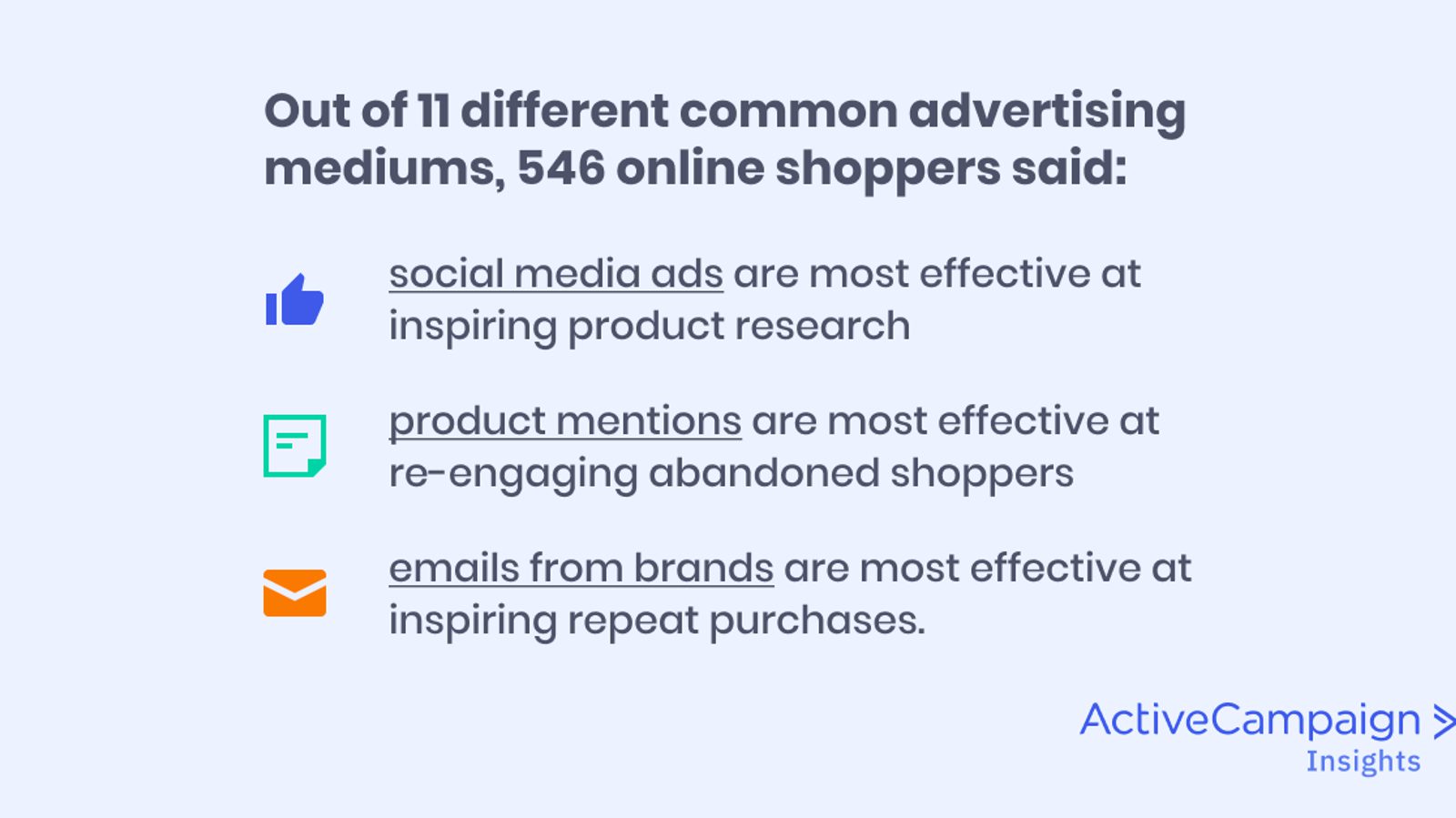- Click a link to learn more
- Type in the brand domain directly
- Run a search for the product or brand
- Which mediums are most effective at inspiring shoppers to start that research phase?
- If a shopper doesn’t buy at first glance, which mediums are most effective at re-engaging them and driving to purchase?
- Which mediums are most effective at inspiring repeat online product purchase?

Methodology
Social media ads are most effective at inspiring product research

Social media ads most frequently inspired product research.
The three mediums that most frequently inspired product research were:- Social Media Ad (23%)
- Product Mentioned in an Article (21%)
- TV Ad (15%)
Product mentions are most effective at re-engaging abandoned shoppers
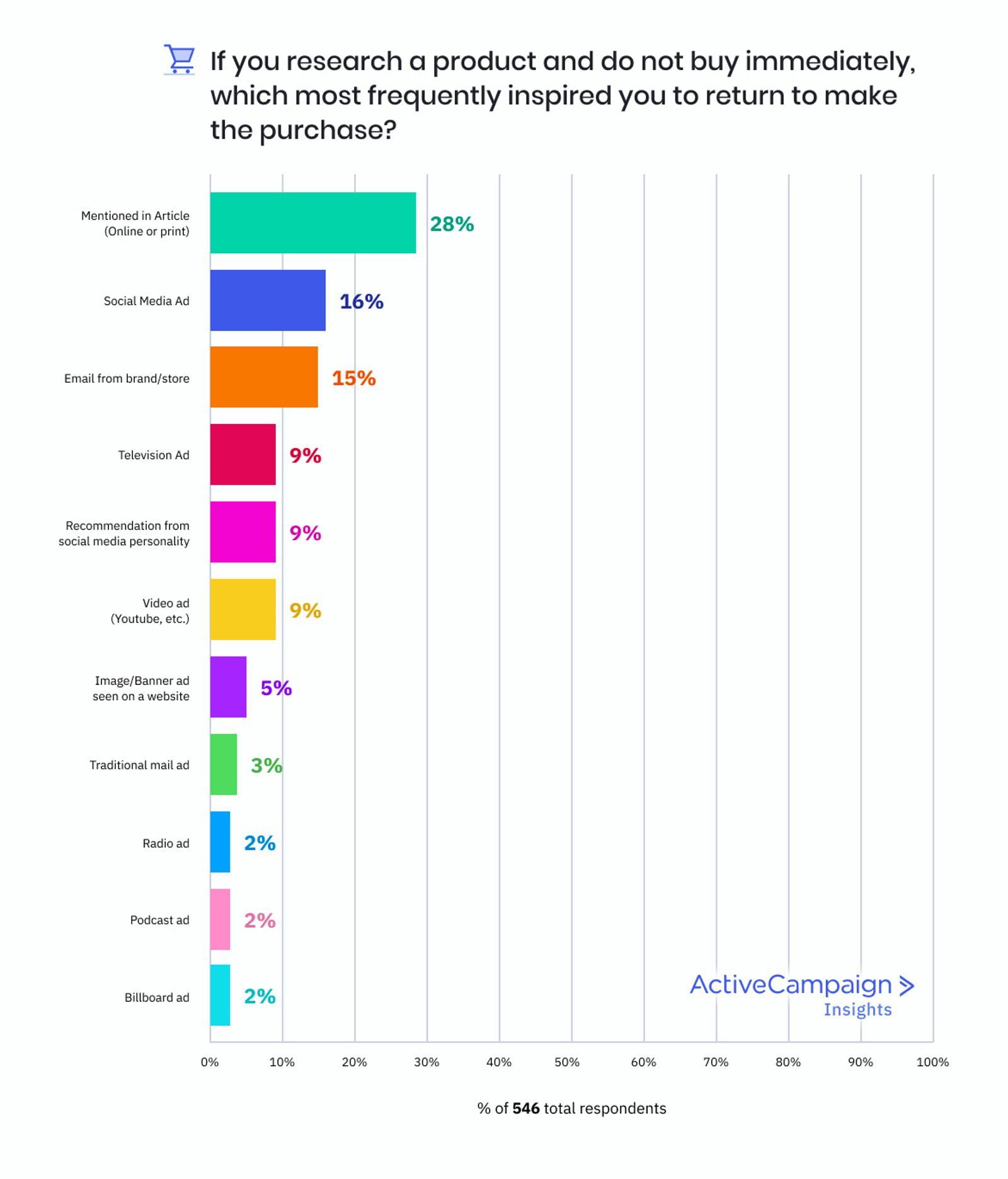
Products mentioned in articles were the most likely to recapture customers who did not make impulse purchases.
If shoppers did not purchase the first time they viewed a product, these mediums were most effective at winning their purchase:- Product Mentioned in an Article (28%)
- Social Media Ad (16%)
- Email from Brand (15%)
- Via a third-party article, find out about a new product that seems interesting
- Research the new product (and likely encounter additional third-party articles)
- Make a purchase decision based on research
Emails from brands are most effective at inspiring repeat purchases from a brand
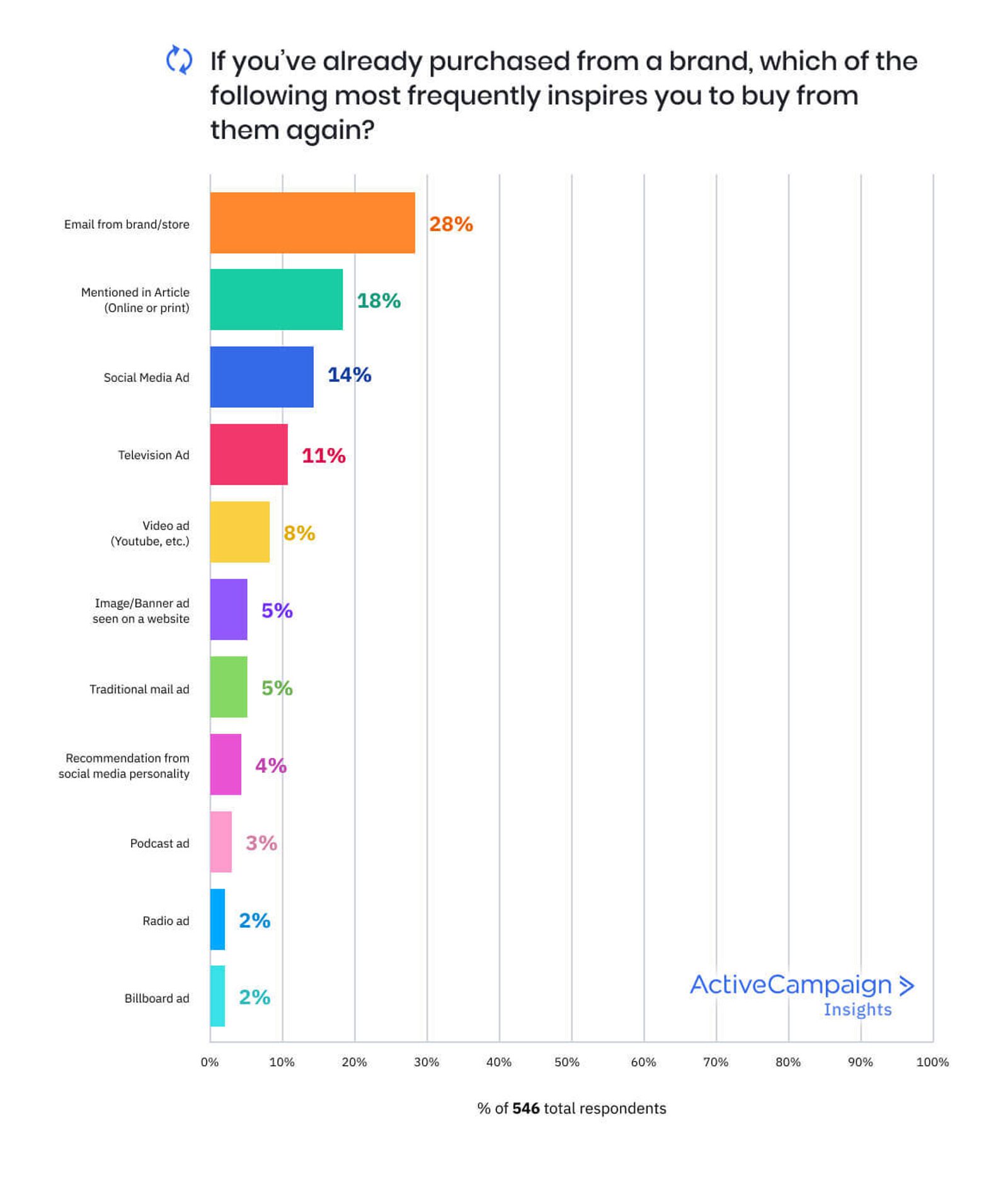
Email marketing was most likely to inspire people to purchase from a brand again.
What inspires people to purchase from a brand more than once? The three mediums that most frequently inspired repeat purchases from a brand were:- Email from Brand (28%)
- Product Mentioned in an Article (18%)
- Social Media Ad (14%)
Appendix: Purchase size and frequency
- How often respondents purchased products online
- How much product research respondents conducted before purchases of up to $200
Purchase frequency

The majority of respondents made online purchases at least a few times per month.
In this research, 81% of respondents reported making online purchases at least a few times per month.The high frequency of purchases and representative nature of this sample suggest that understanding mediums that influence purchase behavior could have substantial benefits for ecommerce businesses.The effect of purchase size on product research
Respondents were asked about the purchase behavior in their first time researching products of different costs. Specifically, respondents were asked about four price points:- Purchases of 25 U.S. dollars or less
- Purchases between 25 and 50 U.S. dollars
- Purchases between 50 and 100 U.S. dollars
- Purchases between 100 and 200 U.S. dollars
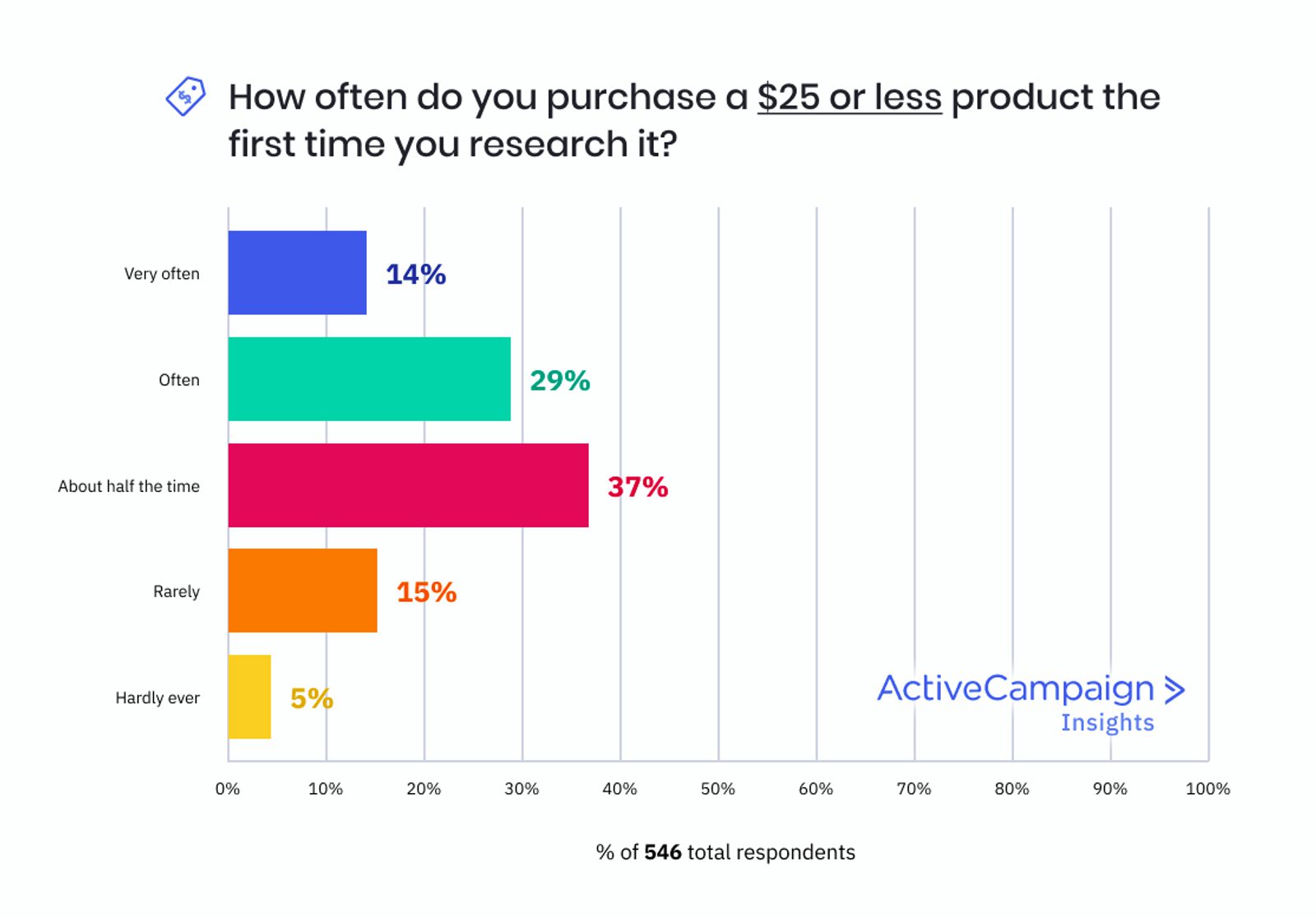
43% of respondents “often” or “very” often purchase a <$25 product in their first research session.

35% of respondents “rarely” or “hardly ever” purchase a $25–$50 product in their first research session. 36% of respondents made such purchases “about half the time.”
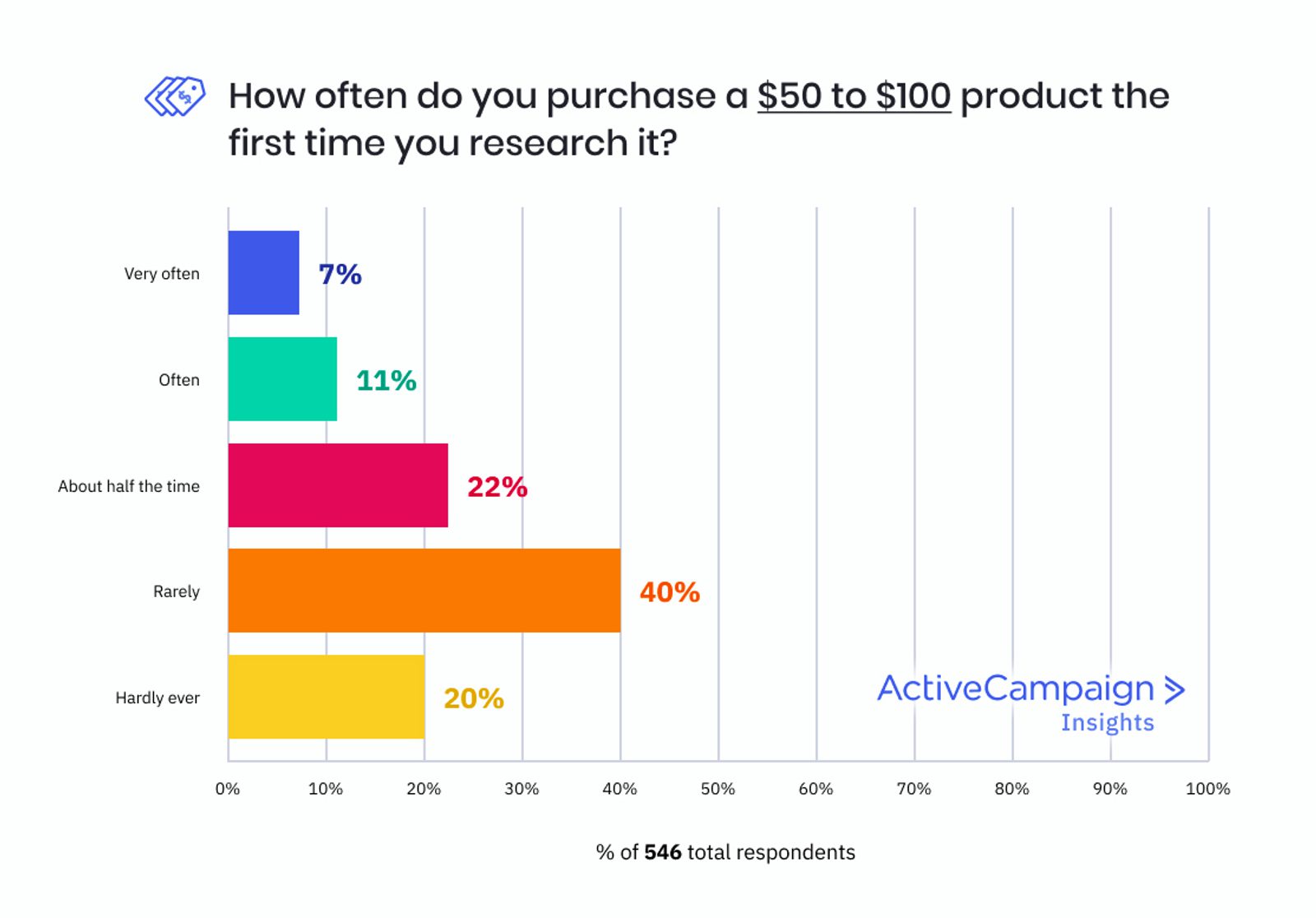
60% of respondents “rarely” or “hardly ever” purchase a $50–$100 product in their first research session.

73% of respondents “rarely” or “hardly ever” purchase a $100–$200 product in their first research session.

